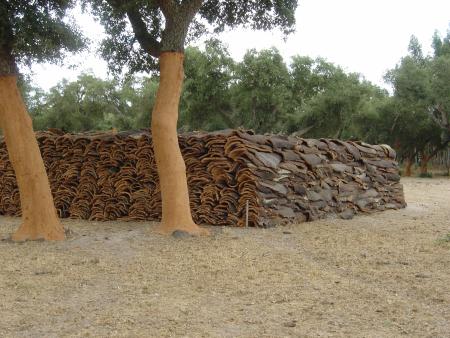
Objective:
The humidity of cork has always been a parameter considered in its commercialization, and is usually expressed as a percentage discount on the total cork quantity. Percentual moisture discounts are usually incorrectly applied, as they are applied directly to the quantity of cork. The same discount applied to cork with different moisture's content can translate into discounts in quantity of cork and not water.
This factsheet intents to inform the cork producers for the relevance of cork sampling for moisture content determination in order to establish the humidity discount in the cork business.
Context:
Until the 90's, moisture discounts of 20% were common despite the existence of a standard from IPQ - Portuguese Institut for Quality, which refers to the 14% moisture content to consider commercially dry cork (NP ISO 1216: 2011) . In reality, this reference value has never been formally integrated into commercialization, perhaps due to the absence of practices and rotines for quantifying cork moisture in the field or to the fact that stacked cork can reach humidity values below 14% until it is transported during the summer.
In 1995, this problem was addressed by the Forestry Institute with the publication of a leaflet with the correct formulas for applying moisture discounts to the sale price or to the quantity of cork.
Contacts:
Conceição Santos Silva, mcssilva@unac.pt, www.unac.pt
Further information:
- Costa, A., Pereira, H., 2012 – Drying kinetics of cork planks in a cork pile in the field. Food Bioprod Process http://dx.doi.org/10.1016/j.fbp.2012.08.002
- Reis, A., 1995 – Conhecimento da humidade a que se referem a quantidade e o preço da cortiça acordados para efeitos de transacção comercial. Um importante passo no sentido do aumento da transparência do processo de comercialização da cortiça no mato. Divisão de Estatística e Estudos Económicos. Instituto Florestal. Lisboa.